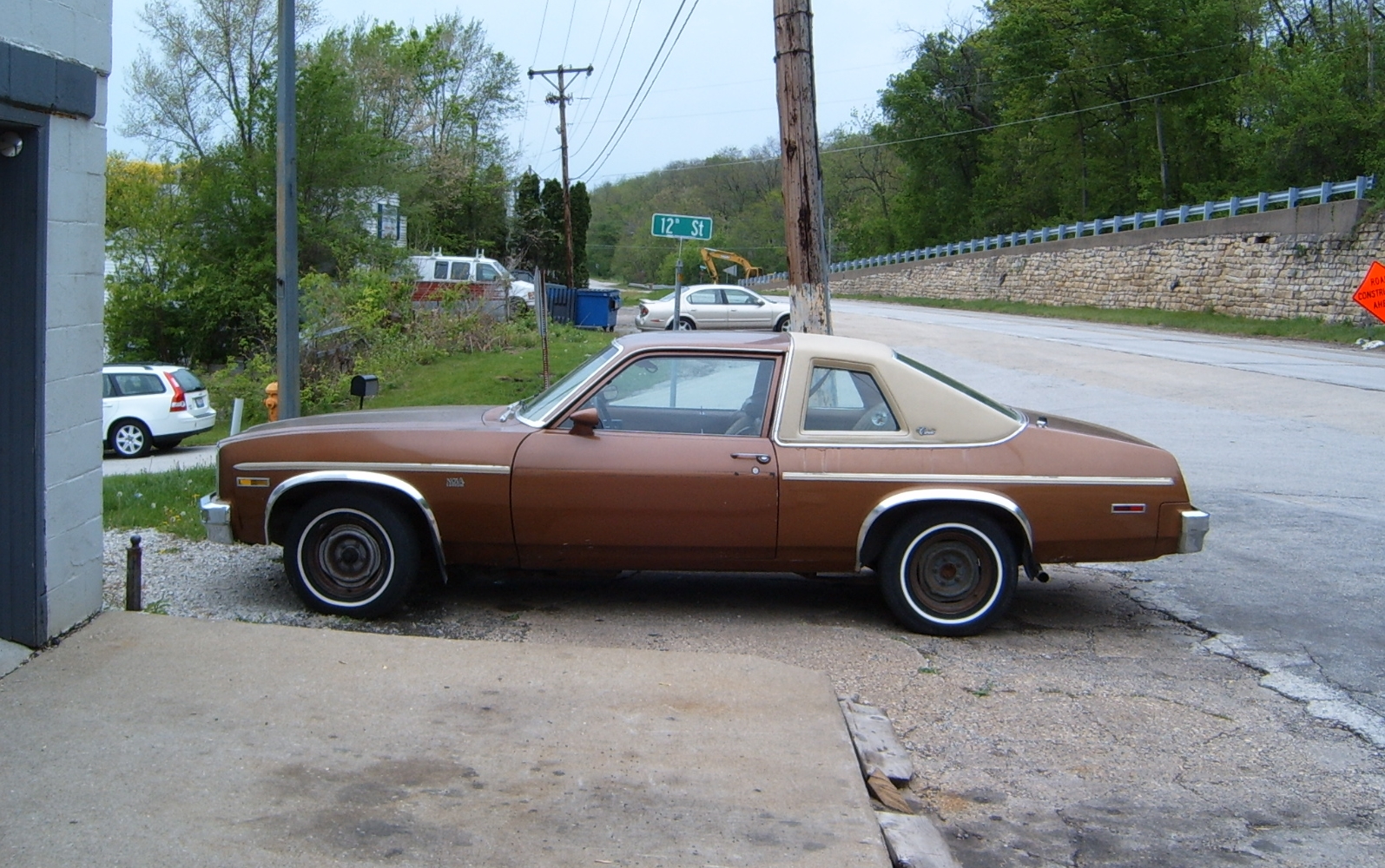
Here’s an oldie but a goodie. I probably took these pictures about ten years ago (Update: it was almost nine-April 15, 2012). I was just driving through Moline, spotted this sitting in front of a repair shop, and mentally noted its location, as it was a cold, clammy rainy day. This one was among the last of the Nova line: A 1979, last call for Novas. Unless you count the Mini-Me Corolla clone version from the mid to late ’80s.
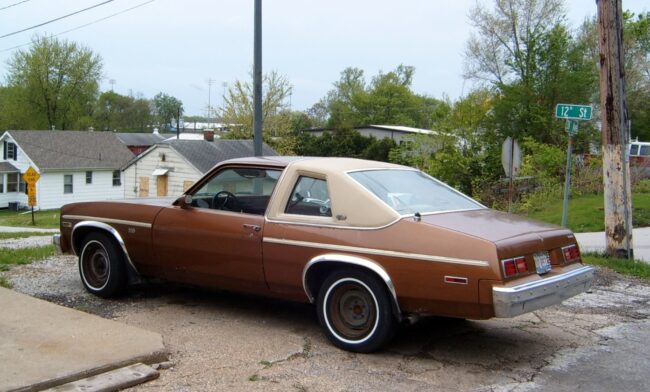
The last full redesign of the Nova had been in 1975, with basic cheapskate lovers’ Nova, nicer Nova Custom and tony LN (for Luxury Nova) versions. Not much changed between then and 1978, but for model year ’79, the aforementioned square headlamps were added, along with a new grille.
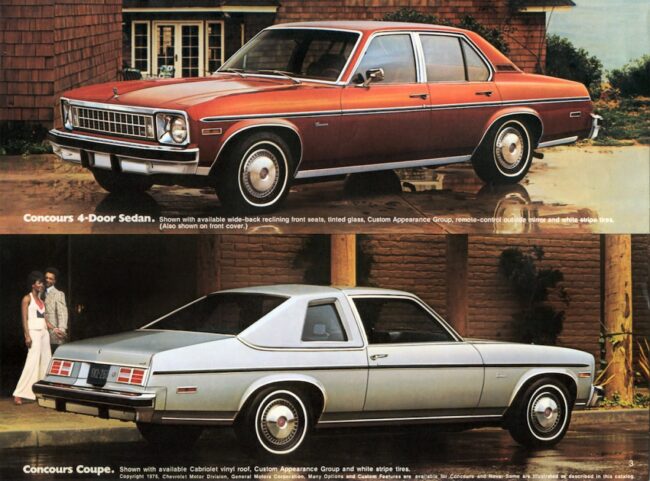
1979 Novas were available as a basic hatchback, sedan and coupe models, plus a plusher Custom sedan and coupe. There was also a largely decorative Rally Equipment option package, with slotted steel wheels, chrome trim rings, and triple stripes on the sides and trunk lid. The luxury Concours version (’76s shown above), which replaced the LN in 1976, meant to compete with the Ford Granada Ghia and Mercury Monarch, but disappeared after 1977. However, many of its plush features moved to the Nova Custom in 1978, including the wide chrome fender moldings and optional Cabriolet landau top.
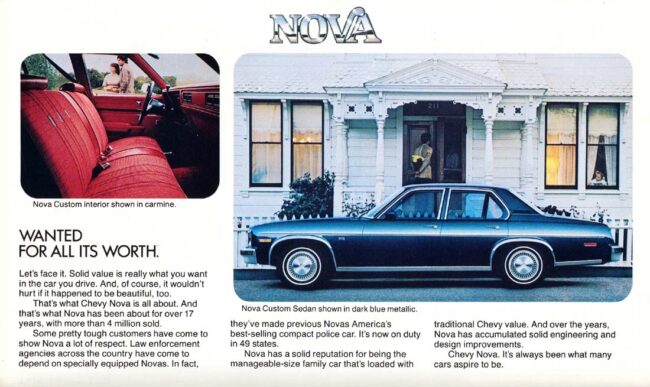
Engine choices were the tried-and-true 250 inline six and a 305 V8 with a two-barrel carb. A 350 V8 was also available in California and high-altitude states. The basic Nova was the most popular by a wide margin.
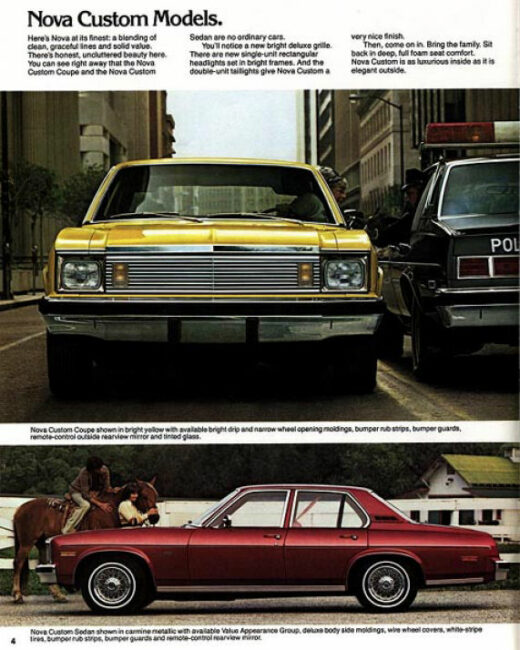
Out of 97,721 sold, over 82,000 were standard Novas. There were not many takers for the Custom, with only 7,529 coupes and 7,690 sedans made. Our featured car, a Custom coupe, sold for $4,164 with the six and $4,399 with the V8.
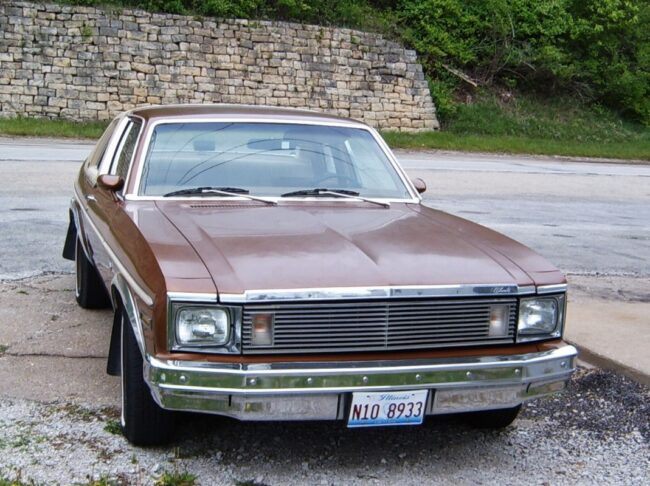
I spotted this Nova a few days before I took the pictures seen here, and thought it was a Concours until I saw the front and with the square headlights. It was fairly clean for a ’79 surviving in the salty Midwest-other than the typical rust bubbling up under that padded vinyl toupee.

It even had a CB radio. Its basic Chevyness was confirmed with the basic black steering wheel and column.
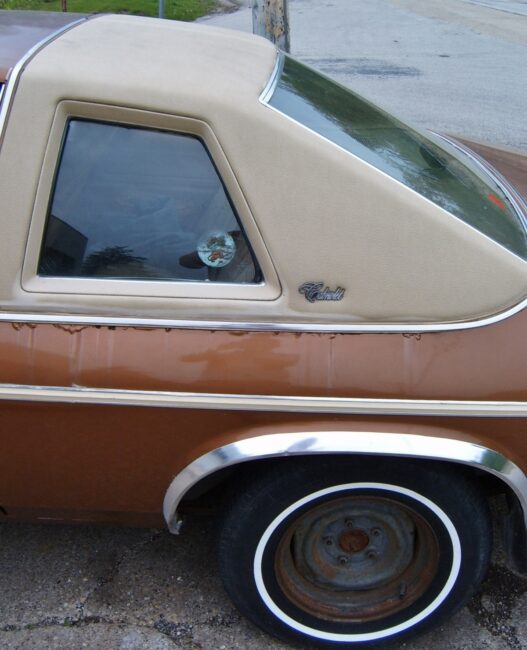
Despite the short model year (production ended in 11/78), Chevy moved nearly 100,000 Novas in 1979. The new front wheel drive Citation was waiting in the wings, and was supposed to be the way of the future for compact cars. Technically it was, though early Citations had quite a few well-publicized problems, the worst likely being their tendency to lock up the rear brakes.
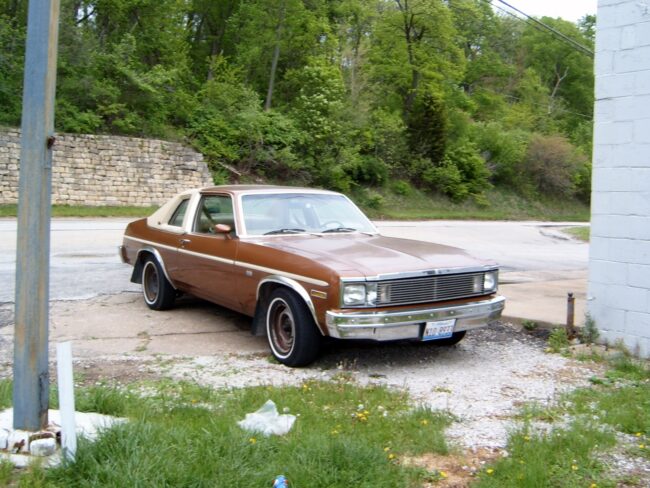
But before all that, the Nova stood one more time as the traditional compact Chevy.







25 Comments
79 was quite the year for the compact buyer in the Chevy showroom, A traditional solid choice in this Nova, a Monza Town Coupe( a Vega with all the flaws cured), or a bold stab at the future with the Citation. Imagine such a wide range of choices today. I would have probably ambled over to Buick with our Austrian friend for a Skylark stab at the future done in it’s most traditional guise but with the small block for the eighties.
*begin pedant* Turnabout being fair play, John, the Vega was not a compact car at the time. It was a subcompact. *end pedant*
Vega, Pinto, and Gremlin became compacts in my mind upon the launch of the Rabbit. In the same way the 70s Concord/Hornet/Eagle wasn’t really a compact anymore after the FWD compacts arrived
Cars are size-categorized based on their interior volumes. The Vega, Pinto and Gremlin almost certainly had less interior volume than the Rabbit, which was also more capacious than the ubiquitous Beetle.
The compact 1979 Chevrolet Nova sedan was bigger in every external dimension than the midsized 1979 Chevrolet Malibu sedan, and not just by a little in terms of wheelbase and overall length. Strange days.
They were almost identical in length to a 1955 Chevy, but with a far smaller backseat and truck continuing with the tradition started in 1964 when the 55-57 full size Chevy size was adopted by “mid-size” Chevelle/Malibu, and then eventually into the “compact” Nova. It is almost the perfect size for a US family car which is why the Accord, Camry are almost the same length, but with FWD are able to offer room and truck space more comparable to the original 1955 Chevy.
It is fun to hear the old 1970s argument from the import humpers that American cars are just too darn big. So easily understandable, and without them having to go into how much they resented labor, management and anyone who would buy the bigger cars.
From my perspective, in that I never bought a Japanese car and probably never will, compact American small cars generally seemed like “cut-down” poverty spec American large cars.
It was as if they wanted you to know that you had no money to buy a real car.
There were exceptions – the Beretta and Fiero didn’t seem like a hateful corporate excercise and we’re made in good faith, and the Lutz era Cruze seemed to be made with care and attention.
In my opinion, tsmaller Japanese cars were made well as if they appreciated their customers and that made all the difference.
Interesting you should mention that. I remember something about the first American compact cars of the late 70s and early 80s being a cynical attempt on the part of the Big Three to convince Americans that small & FWD sucked (which isn’t necessarily incorrect), and to drive customers to demand that the traditional big, RWD cars be continued.
Again, the irony of a Volvo owner doing the “rah-rah murrica fuck yeah love it or leave it” on EVERY SINGLE ARTICLE FOR ANY REASON here is really laughable……
Carmine, you shouldn’t insult Tom like that, he has a right to enjoy Volvos in addition to Broughams.
The 2012 Chevrolet Cruz was a recycled 2009 Daewoo Lacetti. It’s all about managing expectations and the media.
https://www.youtube.com/watch?v=iA67wJclD6Q
As for John’s argument that ‘import humpers’ claimed American cars were too big, the fact is that ‘standard’ cars got so big in the late ’50s that they created a huge market for Detroit’s own compacts in addition to imports.
John – How is it “import humping” to note that the standard sized Chevrolet seems to have been the sweet spot in family car sizing that continues to this day, and that modern Japanese models at best only match but don’t exceed the interior volume or trunk space of a 1955 Chevy? The problem with the 1970s era Nova was it was only slightly more practical than a Camaro when it came to back seat and trunk space, as anyone of above average height who has ever been forced to sit in the back of one will tell you.
It attempts to set a maximum of the acceptable choices that lies precisely at what the import makers are willing to build, less than 5 meters long. Then it uses as evidence of rightness that the imports we are stuck with build that size.
If Tom found a 79 Corona, (175 inches long, 99 inch wheelbase and 11 cubic feet in the trunk), you and your fellow import humpers would not be scolding it as too small and lambasting 70s Toyota for falling short of the 55 Chevy as a proper family car. The criticism only goes one way and ALWAYS against the home team.
Sorry John, but if it was a choice between a 55 Chevy, or 65 Corsa, or even a well optioned 75 Nova LN I’d take the home team over just about any 70s era Japanese car. My criticisms of the home team is not “anti-American”, but simply based on the fact that US cars went from best in the world to pretty much junk inside of about 20 years, while the Europeans and Japanese got a whole lot better during the same period.
Are you claiming you would have made the too small point about the Corona… Doubt it.
If you are feeling anti Japanese, the point is still valid on the 79 Dasher, (173 inches, 97 inch wheelbase 17! cubic feet in the trunk. Too small related to the 55 Chevy. Ditto for the Brava and the Beta.
There were those odd size disparities that happened as the cars were downsized, in 1977 it was the same thing, the Impala was about as big as the Colonnade Chevelle, the Eldorado was bigger than a Fleetwood, etc etc.
Same sort of thing happened again with the next wave of downsizing in the 80’s.
The downsizing problem was more serious in the mid-80s when Caprices were larger and more powerful and DeVilles.
Hell, the Cutlass was bigger than than a deVille. Ideally, it was planned that the RWD BOF cars would be gone by the time the FWD C/H and N(originally Regal/GP/Cutlass replacements) cars came out. The sales dive the full size cars took around 81-82 for sure meant that they would never be popular again, it even caused Pontiac to completely get rid of it’s full size car after 1981.
Those Novas looked good. Kind of a Seville vibe if you squint.
Did they ever fix the “Dog-tracking” rear axle with the redesign? I don’t remember seeing any of the redesigns doing that. Weirdest thing, you’d be directly behind one, not over to the left or right and you could see the tip of a front fender.
That’s the kind of stuff that destroys a companies rep. The fault causing it to happen may have been baked in years ago, but your eyes are seeing it in the present.
That being said, I always liked the look of the redesign.
I was wondering the same thing – I never noticed it in ‘spec’-powered Novas; but the V-8 powered ones would crab walk, as soon as the driver stomped on the gas.
I figured it was drive shaft torque + body flex, but I would love to hear from someone who actually knows.
This is one of those cars I can appreciate more in hindsight. During the 70s, they were ubiquitous, like VW Bugs, just everywhere.
A curious one year restyling with rectangular headlamps (followed by the ’80 Aspen/Volare) that I’ve always felt indicated that they were intended to continue for an additional model year.
I saw it as bet-hedging in case they couldn’t get the Citation out the door.
Which, in light of later events, would have been a good idea — but at the time the Citation was able to move a million units in Year One and seemed like brilliant work.